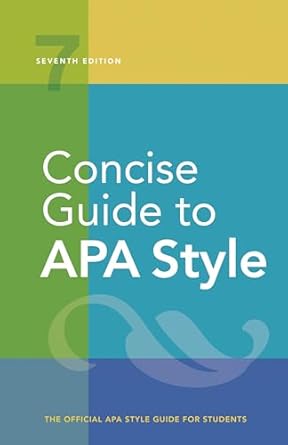[toc]
effective abbreviation use in academic writing
Concise Guide to APA Style: 7th Edition (OFFICIAL)
Page 135 Review
The Art of Abbreviation: A Critical Review
In academic writing, the use of abbreviations is a double-edged sword.
While they can enhance clarity and conciseness, improper usage can lead to confusion and hinder comprehension.
This review examines the principles governing the effective use of abbreviations, drawing from established guidelines and providing illustrative examples.
When to Abbreviate: Balancing Conciseness and Clarity
The primary justification for using abbreviations lies in their ability to save space and avoid cumbersome repetition.
As the text states, “considerable space can be saved and cumbersome repetition avoided.” However, this benefit must be weighed against the potential for ambiguity and the cognitive load placed on the reader.
A well-chosen abbreviation, such as using “L” for large and “S” for small in a sequence description, can be highly effective: “For example, the abbreviations “L’ for large and “S” for small in a paper describing different sequences of reward (LLSS or LSLS) would be effective and readily understood shortcuts.”
The Pitfalls of Overuse: The Reader’s Perspective
One common mistake is overusing abbreviations, assuming that readers will readily grasp their meaning.
This can be counterproductive, forcing the reader to constantly decipher the abbreviations, thereby disrupting the flow of comprehension.
The text provides a clear example: “The advantage of the LH was clear from the RT data, which reflected high FP and FN rates for the RH.” The expanded version, “The advantage of the left hand was clear from the reaction time data, which reflected high false-positive and false-negative rates for the right hand,” is significantly easier to understand at first glance.
The author emphasizes that “writing is generally easier to understand when most words are written out rather than when overflowing with abbreviations.”
The Importance of Frequency: Ensuring Recall
Another crucial aspect of abbreviation usage is frequency.
If an abbreviation is used sparingly, readers may struggle to remember its meaning.
The general rule of thumb, according to the text, is to use an abbreviation at least three times: “In general, if you abbreviate a term, use the abbreviation at least three times in a paper.” This ensures that the reader has sufficient exposure to the abbreviation to internalize its meaning.
However, this rule is not absolute.
Standard abbreviations for well-known terms, such as AIDS or IQ, do not require frequent repetition.
Defining Abbreviations: Clarity is Key
Properly defining abbreviations is essential for clear communication.
The text outlines specific instances where definitions are unnecessary: “In APA Style papers, do not define abbreviations that are listed as terms in the dictionary (e.g., AIDS, IQ).
Also do not define measurement abbreviations, time abbreviations, Latin abbreviations, or many statistical abbreviations.” For all other abbreviations, a clear definition is crucial, even if the term seems familiar.
For example, “RT” for reaction time or “ANOVA’ for analysis of variance.” Once an abbreviation is defined, consistency is paramount: “After you define an abbreviation, use only the abbreviation; do not alternate between spelling out the term and abbreviating it.”
Conclusion: A Balanced Approach
The effective use of abbreviations requires a careful balance between conciseness and clarity.
While abbreviations can save space and avoid repetition, they should be used judiciously and always defined clearly.
By adhering to these guidelines, writers can enhance the readability and accessibility of their work.
Buy full ebook for only $18: https://www.lulu.com/shop/american-psychological-association/concise-guide-to-apa-style-7th-edition-official/ebook/product-rmzpq54.html?page=1&pageSize=4
Effective Abbreviation Use In Academic Writing
Read more: APA Headings: A Guide to Perfect Formatting


Leave a Reply